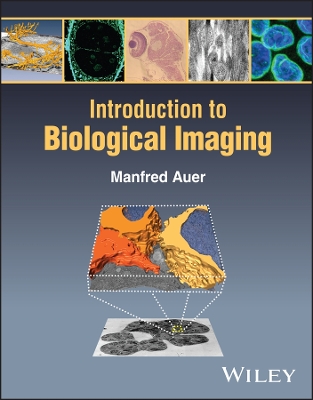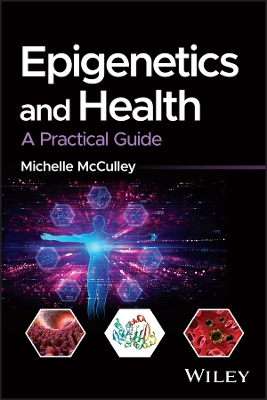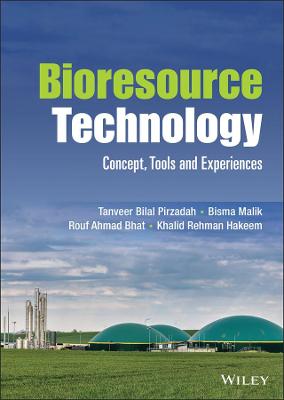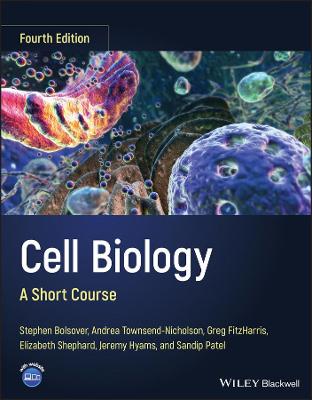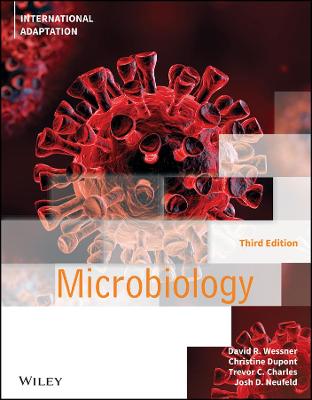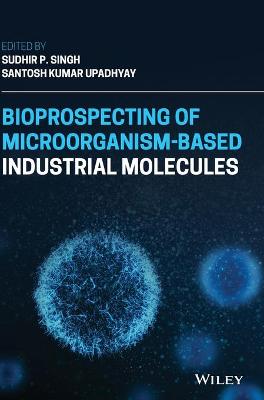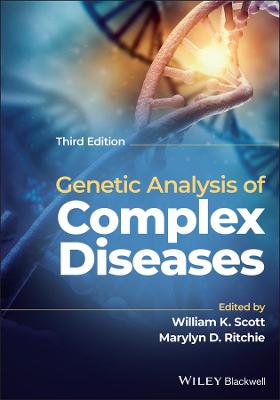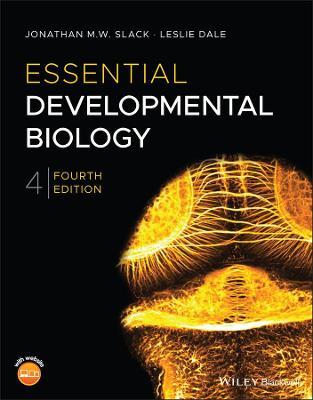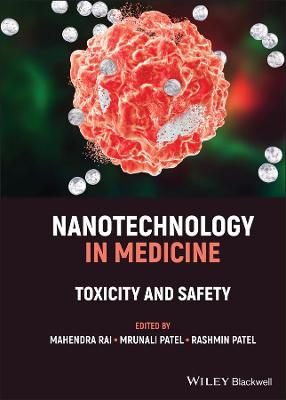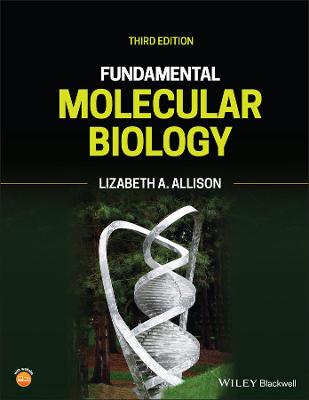Structure and Function of the Bacterial Genome
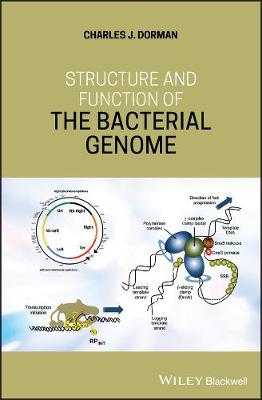 -15%
portes grátis
-15%
portes grátis
Structure and Function of the Bacterial Genome
Dorman, Charles J.
John Wiley and Sons Ltd
03/2020
432
Dura
Inglês
9781119308799
15 a 20 dias
980
1 The Bacterial Genome - Where the Genes are 1
1.1 Genome Philosophy 1
1.2 The Bacterial Chromosome 4
1.3 Chromosome Replication: Initiation 6
1.4 Chromosome Replication: Elongation 11
1.5 Chromosome Replication: Termination 12
1.6 Replication Produces Physically Connected Products 13
1.7 Decatenating the Sister Chromosomes 13
1.8 Resolving Chromosome Dimers 14
1.9 Segregating the Products of Chromosome Replication 15
1.10 Polar Tethering of Chromosome Origins 20
1.11 Some Bacterial Chromosomes are Linear 20
1.12 Some Bacteria Have More than One Chromosome 21
1.13 Plasmids 22
1.14 Plasmid Replication 22
1.15 Plasmid Segregation 26
1.16 The Nucleoid 28
1.17 The Chromosome Has Looped Domains 29
1.18 The Macrodomain Structure of the Chromosome 29
1.19 The Chromosome Displays Spatial Arrangement Within the Cell 30
1.20 SeqA and Nucleoid Organisation 31
1.21 MukB, a Condensin-Like Protein 32
1.22 MatP, the matS Site and Ter Organisation 33
1.23 MaoP and the maoS Site 34
1.24 SlmA and Nucleoid Occlusion 34
1.25 The Min System and Z Ring Localisation 34
1.26 DNA in the Bacterial Nucleoid 36
1.27 DNA Topology 36
1.28 DNA Topoisomerases: DNA Gyrase 38
1.29 DNA Topoisomerases: DNA Topoisomerase IV 40
1.30 DNA Topoisomerases: DNA Topoisomerase I 40
1.31 DNA Topoisomerases: DNA Topoisomerase III 41
1.32 DNA Replication and Transcription Alter Local DNA Topology 41
1.33 Transcription and Nucleoid Structure 41
1.34 Nucleoid-associated Proteins (NAPs) and Nucleoid Structure 43
1.35 DNA Bending Protein Integration Host Factor (IHF) 44
1.36 HU, a NAP with General DNA-binding Activity 46
1.37 The Very Versatile FIS Protein 47
1.38 FIS and the Early Exponential Phase of Growth 48
1.39 FIS and the Stringent Response 49
1.40 FIS and DNA Topology 49
1.41 Ferritin-Like Dps and the Curved-DNA-binding Protein CbpA 51
1.42 The H-NS Protein: A Silencer of Transcription 53
1.43 StpA: A Paralogue of H-NS 57
1.44 H-NS Orthologues Encoded by Plasmids and Phage 58
1.45 H-NSB/Hfp and H-NS2: H-NS Homologues of HGT Origin 58
1.46 A Truncated H-NS-Like Protein 59
1.47 Hha-like Proteins 59
1.48 Other H-NS Homologues: The Ler Protein from EPEC 60
1.49 H-NS Functional Homologues 62
1.50 H-NS Functional Homologues: Rok from Bacillus spp. 63
1.51 H-NS Functional Homologues: Lsr2 from Actinomycetes 63
1.52 H-NS Functional Homologues: MvaT from Pseudomonas spp. 63
1.53 The Leucine-responsive Regulatory Protein, LRP 64
1.54 Small, Acid-soluble Spore Proteins, SASPs 65
2 Conservation and Evolution of the Dynamic Genome 67
2.1 Disruptive Influences: Mutations 67
2.2 Repetitive Sequences in the Chromosome and Their Influence on Genetic Stability 69
2.3 Contingency Loci and the Generation of Microbial Variety 70
2.4 Rhs: Rearrangement Hotspots 71
2.5 REP Sequences 72
2.6 RIB/RIP, BIME-1, and BIME-2 Elements 73
2.7 ERIC Sequences 73
2.8 Repeat-Mediated Rearrangements: Mechanisms and Frequency 74
2.9 Site-specific Recombination and Phenotypic Variety 74
2.10 Site-Specific Recombination: Bacteriophage Lambda 75
2.11 The Lambda Lysis/Lysogeny Decision 76
2.12 Tyrosine Integrases 77
2.13 Serine Invertases 78
2.14 Large Serine Recombinases 79
2.15 Transposition and Transposable Elements 80
2.16 Pathways of Transposition 82
2.17 Peel-and-paste Transposition 85
2.18 Control of Transposition 88
2.19 Host Factors and Transposition 91
2.20 Integrative and Conjugative Elements (ICE) 91
2.21 Integrons 93
2.22 Introns 96
2.23 Horizontal Gene Transfer 96
2.24 Distinguishing Self from Non-self 99
2.25 Distinguishing Self and Non-self: CRISPR-Cas Systems 99
2.26 Distinguishing Self and Non-self: Argonaute Proteins 102
2.27 Distinguishing Self and Non-self: Restriction Enzymes/Methylases 103
2.28 Distinguishing Self and Non-self: BREX 103
2.29 Self-sacrifice and Other Behaviours Involving Toxin-antitoxin Systems 104
2.30 Conservative Forces: DNA Repair and Homologous Recombination 104
2.31 The RecA Protein 105
2.32 RecA, LexA, and the SOS Response 106
2.33 Holliday Junction Resolution 108
2.34 Mismatch Repair 109
2.35 Non-homologous End Joining 110
3 Gene Control: Transcription and Its Regulation 113
3.1 Transcription: More Than Just Transcribing Genetic Information 113
3.2 RNA Polymerase 113
3.3 The Core Enzyme 114
3.4 The Sigma Factors (and Anti-Sigma Factors) 116
3.5 Promoter Architecture 120
3.6 Stringently Regulated Promoters 120
3.7 Transcription Factors and RNA Polymerase 121
3.8 Transcription Initiation 124
3.9 Transcription Elongation 125
3.10 Transcription Termination: Intrinsic and Rho-Dependent Terminators 127
3.11 Rho and Imported Genes 128
3.12 Rho, R-Loops, and DNA Supercoiling 128
3.13 Rho and Antisense Transcripts 128
3.14 Anti-Termination: Insights from Phage Studies 129
3.15 Transcription Occurs in Bursts 129
4 Gene Control: Regulation at the RNA Level 133
4.1 Antisense Transcripts and Gene Regulation in cis 134
4.2 RNA that Regulates in trans 134
4.3 DsrA and the RpoS/H-NS Link 138
4.4 sRNA Turnover 140
4.5 DEAD-box Proteins 140
4.6 RNA Chaperone Proteins 141
4.7 StpA, H-NS, and RNA Binding 142
4.8 Degradation of mRNA 143
4.9 RNA Folding and Gene Regulation 144
4.10 Transcription Attenuation 145
4.11 Riboswitches 145
4.12 RNA as a Structural Component in the Nucleoid 146
5 Gene Control: Regulation at the Protein Level 149
5.1 Control Beyond DNA and RNA 149
5.2 Translation Machinery and Control: tRNA and rRNA 149
5.3 Translation Machinery and Control: The Ribosome 150
5.4 Translation Initiation 152
5.5 Translation Elongation 154
5.6 Elongation Factor P (EF-P) 155
5.7 Translation Termination 156
5.8 Protein Secretion 157
5.9 Protein Secretion: The Sec Pathway 157
5.10 The Twin Arginine Translocation (Tat) Pathway of Protein Secretion 159
5.11 Type 1 Secretion Systems (T1SS) 160
5.12 Type 2 Secretion Systems (T2SS) 161
5.13 Type 3 Secretion Systems (T3SS) 162
5.14 Type 4 Secretion Systems (T4SS) 164
5.15 Type 5 Secretion Systems (T5SS): The Autotransporters 165
5.16 Type 6 Secretion Systems (T6SS) 166
5.17 Protein Secretion in Gram-Positive Bacteria: SecA1, SecA2, and SrtA 167
5.18 Type 7 Secretion Systems (T7SS) 168
5.19 Protein Modification: Acetylation 168
5.20 Protein Modification: Glycosylation 169
5.21 Protein Modification: Phosphorylation 169
5.22 Protein Splicing 171
5.23 Small Proteins 172
5.24 Selenocysteine and Pyrrolysine: The 21st and 22nd Amino Acids 173
6 Gene Control and Bacterial Physiology 175
6.1 The Bacterial Growth Cycle 175
6.2 Physiology Changes Throughout the Growth Cycle 176
6.3 Generating Physiological Variety from Genetic Homogeneity 178
6.4 Bacterial Economics - Some Basic Principles 179
6.5 Carbon Sources and Metabolism 180
6.6 Gene Control and Carbon Source Utilisation 183
6.7 Anaerobic Respiration 183
6.8 ArcA, Mobile Genetic Elements, and HGT 184
6.9 Stress and Stress Survival in Bacterial Life 185
6.10 Oxygen Stress 185
6.11 Iron Starvation 186
6.12 Siderophores and Iron Capture 188
6.13 TonB-Dependent Transporters 188
6.14 Gene Regulation and Iron Transport 190
6.15 Iron Storage and Homeostasis 191
6.16 Osmotic Stress andWater Relations in Bacteria 191
6.17 Signal Molecules and Stress 193
6.18 The Stringent Response 194
6.19 Regulation of the Acid Stress Response 196
6.20 Alkaline pH Stress Response 200
6.21 Motility and Chemotaxis 201
6.22 Quorum Sensing 203
6.23 Biofilms 205
6.24 'Cheating' as a Lifestyle Strategy 206
6.25 Thermal Regulation 207
6.26 Epigenomics and Phasevarions 209
6.27 Some Unifying Themes 210
7 Gene Control: Global Regulation by H-NS 211
7.1 H-NS is a Global Regulator 211
7.2 H-NS and Foreign DNA 211
7.3 H-NS and Xenogenic Silencing: Three Case Studies 212
7.4 The H-NS Virulence Regulon in Vibrio cholerae 212
7.5 HGT in V. cholerae: The CTX? Phage and the VPI1 Island 213
7.6 The ToxRS, ToxT, TcpPH Regulatory Network 215
7.7 Control by VpsR, VpsT, and HapR 215
7.8 Quorum Sensing and Cholera 217
7.9 Chitin and HGT 217
7.10 The H-NS Virulence Regulon in Shigella flexneri 219
7.11 Shigella Infection 221
7.12 The VirF AraC-Like Transcription Factor 222
7.13 VirB: A Recruit from a Plasmid-Partitioning System 222
7.14 The Shigella Virulence Plasmid 223
7.15 The Salmonella H-NS Virulence Gene Regulon 223
7.16 Salmonella's Pathogenicity Islands (SPI) 224
7.17 SlyA, PhoP/Q, and SPI Gene Expression 227
7.18 Gene Control in SPI1 and SPI2 227
8 An Integrated View of Genome Structure and Function 231
8.1 Networks versus Hierarchies 231
8.2 Regulons, Stimulons, and Heterarchies/Netarchies 232
8.3 Transcription Burstiness and Regulatory Noise 233
8.4 The Significance of Gene Position 234
8.5 Messenger RNA May Not Be Free to Diffuse Far in Bacteria 236
8.6 RNA Polymerase Activity and Genome Organisation 237
8.7 Gene-Gene Interactions in the Folded Chromosome 239
8.8 DNA Supercoiling as a Global Regulator 240
8.9 Modelling the Nucleoid 243
8.10 Synthetic Biology 243
References 247
Index 379
1 The Bacterial Genome - Where the Genes are 1
1.1 Genome Philosophy 1
1.2 The Bacterial Chromosome 4
1.3 Chromosome Replication: Initiation 6
1.4 Chromosome Replication: Elongation 11
1.5 Chromosome Replication: Termination 12
1.6 Replication Produces Physically Connected Products 13
1.7 Decatenating the Sister Chromosomes 13
1.8 Resolving Chromosome Dimers 14
1.9 Segregating the Products of Chromosome Replication 15
1.10 Polar Tethering of Chromosome Origins 20
1.11 Some Bacterial Chromosomes are Linear 20
1.12 Some Bacteria Have More than One Chromosome 21
1.13 Plasmids 22
1.14 Plasmid Replication 22
1.15 Plasmid Segregation 26
1.16 The Nucleoid 28
1.17 The Chromosome Has Looped Domains 29
1.18 The Macrodomain Structure of the Chromosome 29
1.19 The Chromosome Displays Spatial Arrangement Within the Cell 30
1.20 SeqA and Nucleoid Organisation 31
1.21 MukB, a Condensin-Like Protein 32
1.22 MatP, the matS Site and Ter Organisation 33
1.23 MaoP and the maoS Site 34
1.24 SlmA and Nucleoid Occlusion 34
1.25 The Min System and Z Ring Localisation 34
1.26 DNA in the Bacterial Nucleoid 36
1.27 DNA Topology 36
1.28 DNA Topoisomerases: DNA Gyrase 38
1.29 DNA Topoisomerases: DNA Topoisomerase IV 40
1.30 DNA Topoisomerases: DNA Topoisomerase I 40
1.31 DNA Topoisomerases: DNA Topoisomerase III 41
1.32 DNA Replication and Transcription Alter Local DNA Topology 41
1.33 Transcription and Nucleoid Structure 41
1.34 Nucleoid-associated Proteins (NAPs) and Nucleoid Structure 43
1.35 DNA Bending Protein Integration Host Factor (IHF) 44
1.36 HU, a NAP with General DNA-binding Activity 46
1.37 The Very Versatile FIS Protein 47
1.38 FIS and the Early Exponential Phase of Growth 48
1.39 FIS and the Stringent Response 49
1.40 FIS and DNA Topology 49
1.41 Ferritin-Like Dps and the Curved-DNA-binding Protein CbpA 51
1.42 The H-NS Protein: A Silencer of Transcription 53
1.43 StpA: A Paralogue of H-NS 57
1.44 H-NS Orthologues Encoded by Plasmids and Phage 58
1.45 H-NSB/Hfp and H-NS2: H-NS Homologues of HGT Origin 58
1.46 A Truncated H-NS-Like Protein 59
1.47 Hha-like Proteins 59
1.48 Other H-NS Homologues: The Ler Protein from EPEC 60
1.49 H-NS Functional Homologues 62
1.50 H-NS Functional Homologues: Rok from Bacillus spp. 63
1.51 H-NS Functional Homologues: Lsr2 from Actinomycetes 63
1.52 H-NS Functional Homologues: MvaT from Pseudomonas spp. 63
1.53 The Leucine-responsive Regulatory Protein, LRP 64
1.54 Small, Acid-soluble Spore Proteins, SASPs 65
2 Conservation and Evolution of the Dynamic Genome 67
2.1 Disruptive Influences: Mutations 67
2.2 Repetitive Sequences in the Chromosome and Their Influence on Genetic Stability 69
2.3 Contingency Loci and the Generation of Microbial Variety 70
2.4 Rhs: Rearrangement Hotspots 71
2.5 REP Sequences 72
2.6 RIB/RIP, BIME-1, and BIME-2 Elements 73
2.7 ERIC Sequences 73
2.8 Repeat-Mediated Rearrangements: Mechanisms and Frequency 74
2.9 Site-specific Recombination and Phenotypic Variety 74
2.10 Site-Specific Recombination: Bacteriophage Lambda 75
2.11 The Lambda Lysis/Lysogeny Decision 76
2.12 Tyrosine Integrases 77
2.13 Serine Invertases 78
2.14 Large Serine Recombinases 79
2.15 Transposition and Transposable Elements 80
2.16 Pathways of Transposition 82
2.17 Peel-and-paste Transposition 85
2.18 Control of Transposition 88
2.19 Host Factors and Transposition 91
2.20 Integrative and Conjugative Elements (ICE) 91
2.21 Integrons 93
2.22 Introns 96
2.23 Horizontal Gene Transfer 96
2.24 Distinguishing Self from Non-self 99
2.25 Distinguishing Self and Non-self: CRISPR-Cas Systems 99
2.26 Distinguishing Self and Non-self: Argonaute Proteins 102
2.27 Distinguishing Self and Non-self: Restriction Enzymes/Methylases 103
2.28 Distinguishing Self and Non-self: BREX 103
2.29 Self-sacrifice and Other Behaviours Involving Toxin-antitoxin Systems 104
2.30 Conservative Forces: DNA Repair and Homologous Recombination 104
2.31 The RecA Protein 105
2.32 RecA, LexA, and the SOS Response 106
2.33 Holliday Junction Resolution 108
2.34 Mismatch Repair 109
2.35 Non-homologous End Joining 110
3 Gene Control: Transcription and Its Regulation 113
3.1 Transcription: More Than Just Transcribing Genetic Information 113
3.2 RNA Polymerase 113
3.3 The Core Enzyme 114
3.4 The Sigma Factors (and Anti-Sigma Factors) 116
3.5 Promoter Architecture 120
3.6 Stringently Regulated Promoters 120
3.7 Transcription Factors and RNA Polymerase 121
3.8 Transcription Initiation 124
3.9 Transcription Elongation 125
3.10 Transcription Termination: Intrinsic and Rho-Dependent Terminators 127
3.11 Rho and Imported Genes 128
3.12 Rho, R-Loops, and DNA Supercoiling 128
3.13 Rho and Antisense Transcripts 128
3.14 Anti-Termination: Insights from Phage Studies 129
3.15 Transcription Occurs in Bursts 129
4 Gene Control: Regulation at the RNA Level 133
4.1 Antisense Transcripts and Gene Regulation in cis 134
4.2 RNA that Regulates in trans 134
4.3 DsrA and the RpoS/H-NS Link 138
4.4 sRNA Turnover 140
4.5 DEAD-box Proteins 140
4.6 RNA Chaperone Proteins 141
4.7 StpA, H-NS, and RNA Binding 142
4.8 Degradation of mRNA 143
4.9 RNA Folding and Gene Regulation 144
4.10 Transcription Attenuation 145
4.11 Riboswitches 145
4.12 RNA as a Structural Component in the Nucleoid 146
5 Gene Control: Regulation at the Protein Level 149
5.1 Control Beyond DNA and RNA 149
5.2 Translation Machinery and Control: tRNA and rRNA 149
5.3 Translation Machinery and Control: The Ribosome 150
5.4 Translation Initiation 152
5.5 Translation Elongation 154
5.6 Elongation Factor P (EF-P) 155
5.7 Translation Termination 156
5.8 Protein Secretion 157
5.9 Protein Secretion: The Sec Pathway 157
5.10 The Twin Arginine Translocation (Tat) Pathway of Protein Secretion 159
5.11 Type 1 Secretion Systems (T1SS) 160
5.12 Type 2 Secretion Systems (T2SS) 161
5.13 Type 3 Secretion Systems (T3SS) 162
5.14 Type 4 Secretion Systems (T4SS) 164
5.15 Type 5 Secretion Systems (T5SS): The Autotransporters 165
5.16 Type 6 Secretion Systems (T6SS) 166
5.17 Protein Secretion in Gram-Positive Bacteria: SecA1, SecA2, and SrtA 167
5.18 Type 7 Secretion Systems (T7SS) 168
5.19 Protein Modification: Acetylation 168
5.20 Protein Modification: Glycosylation 169
5.21 Protein Modification: Phosphorylation 169
5.22 Protein Splicing 171
5.23 Small Proteins 172
5.24 Selenocysteine and Pyrrolysine: The 21st and 22nd Amino Acids 173
6 Gene Control and Bacterial Physiology 175
6.1 The Bacterial Growth Cycle 175
6.2 Physiology Changes Throughout the Growth Cycle 176
6.3 Generating Physiological Variety from Genetic Homogeneity 178
6.4 Bacterial Economics - Some Basic Principles 179
6.5 Carbon Sources and Metabolism 180
6.6 Gene Control and Carbon Source Utilisation 183
6.7 Anaerobic Respiration 183
6.8 ArcA, Mobile Genetic Elements, and HGT 184
6.9 Stress and Stress Survival in Bacterial Life 185
6.10 Oxygen Stress 185
6.11 Iron Starvation 186
6.12 Siderophores and Iron Capture 188
6.13 TonB-Dependent Transporters 188
6.14 Gene Regulation and Iron Transport 190
6.15 Iron Storage and Homeostasis 191
6.16 Osmotic Stress andWater Relations in Bacteria 191
6.17 Signal Molecules and Stress 193
6.18 The Stringent Response 194
6.19 Regulation of the Acid Stress Response 196
6.20 Alkaline pH Stress Response 200
6.21 Motility and Chemotaxis 201
6.22 Quorum Sensing 203
6.23 Biofilms 205
6.24 'Cheating' as a Lifestyle Strategy 206
6.25 Thermal Regulation 207
6.26 Epigenomics and Phasevarions 209
6.27 Some Unifying Themes 210
7 Gene Control: Global Regulation by H-NS 211
7.1 H-NS is a Global Regulator 211
7.2 H-NS and Foreign DNA 211
7.3 H-NS and Xenogenic Silencing: Three Case Studies 212
7.4 The H-NS Virulence Regulon in Vibrio cholerae 212
7.5 HGT in V. cholerae: The CTX? Phage and the VPI1 Island 213
7.6 The ToxRS, ToxT, TcpPH Regulatory Network 215
7.7 Control by VpsR, VpsT, and HapR 215
7.8 Quorum Sensing and Cholera 217
7.9 Chitin and HGT 217
7.10 The H-NS Virulence Regulon in Shigella flexneri 219
7.11 Shigella Infection 221
7.12 The VirF AraC-Like Transcription Factor 222
7.13 VirB: A Recruit from a Plasmid-Partitioning System 222
7.14 The Shigella Virulence Plasmid 223
7.15 The Salmonella H-NS Virulence Gene Regulon 223
7.16 Salmonella's Pathogenicity Islands (SPI) 224
7.17 SlyA, PhoP/Q, and SPI Gene Expression 227
7.18 Gene Control in SPI1 and SPI2 227
8 An Integrated View of Genome Structure and Function 231
8.1 Networks versus Hierarchies 231
8.2 Regulons, Stimulons, and Heterarchies/Netarchies 232
8.3 Transcription Burstiness and Regulatory Noise 233
8.4 The Significance of Gene Position 234
8.5 Messenger RNA May Not Be Free to Diffuse Far in Bacteria 236
8.6 RNA Polymerase Activity and Genome Organisation 237
8.7 Gene-Gene Interactions in the Folded Chromosome 239
8.8 DNA Supercoiling as a Global Regulator 240
8.9 Modelling the Nucleoid 243
8.10 Synthetic Biology 243
References 247
Index 379

